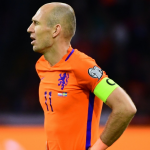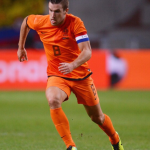.png)
Why is the Dutch national team orange?
It has to do with Spanish rule, revolutions and royal families
June 21st, 2021
More curious than the current controversy over De Boer's 5-3-2, is undoubtedly the colour of the national team's jersey and its origin. Like Italy, the Dutch are known by a colour that is not present in the flag, not even in their own, the oldest tricolour in the world. Although in the first official matches the national team took to the field in a basic white jersey with a large diagonal red, white and blue stripe, reproduced in 2006 by Nike as the away jersey, the Dutch never felt fully represented. The reason for this choice, as always, has its roots in history. The Orange-Nassau dynasty decided the fate of this colour. A history that began in 1568, made up of conflicts and rebellions against Spanish rule in a war that lasted eighty years and radically changed the future of the Netherlands. William of Orange, the taciturn prince, played a key role in this history. In 1648, he put an end to domination, ushering in the Dutch Golden Age.
From that moment on, the Dutch felt at one with the dynasty, so much so that they identified with that surname but above all with that colour which became part of them, even if the first game in orange only came in 1974. Another detail that helps us understand the prominent role of the family in Holland is the anthem. The House of Orange-Nassau dates back to William (Willem in Dutch) van Oranje who lent his name to the Dutch national anthem, Wilhelmus.
A troubled history both from a political and a sporting point of view. Before arriving at total football, the one that marked the Dutch hegemony in the world, the orange went through a black period, a blackout that lasted 32 years before seeing them again on the stage of the world elite. The arrival of the orange jersey was preceded by a blue jersey, a colour that was soon abandoned, also because since the 1934 World Cup Dutch fans have been wearing only orange in the stadiums. The end of the 80's marked a revolution both from a stylistic and sporting point of view, Johann Cruyff became the emblem of the national team and its rebirth. A national team that slowly grew and started to believe in itself as never before, perhaps it was the orange that gave the right motivation.
Orange has not always accompanied the Dutch national team, but it is the colour that symbolically started the independence process and consequently has and has had a fundamental role in history, so much so that it is worn every 27th April, the day in which King William is celebrated.








































.png)


.jpg)









.png)
.png)
.png)












.jpg)
.png)


.png)
.png)